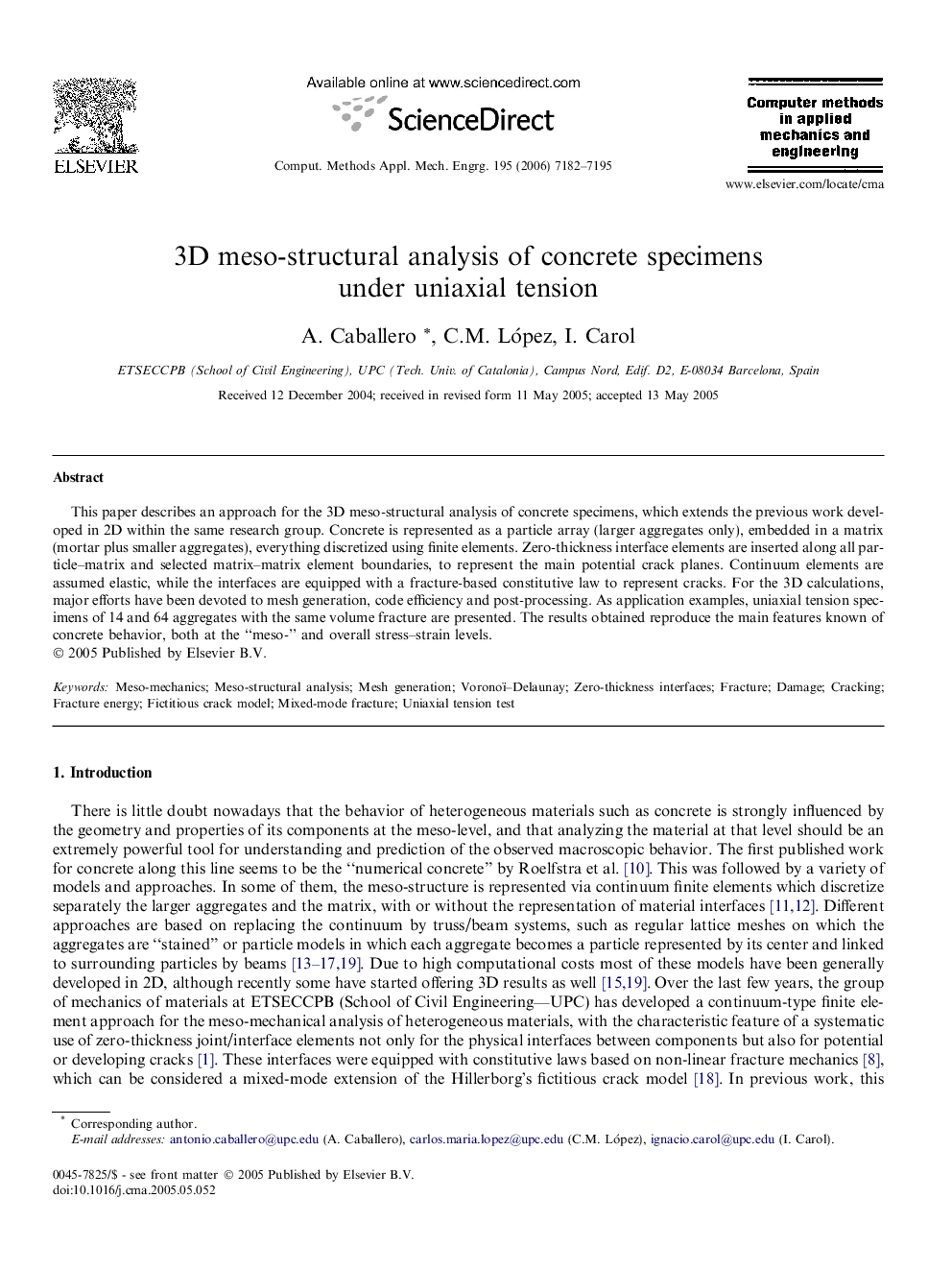| Article ID | Journal | Published Year | Pages | File Type |
|---|---|---|---|---|
| 499592 | Computer Methods in Applied Mechanics and Engineering | 2006 | 14 Pages |
This paper describes an approach for the 3D meso-structural analysis of concrete specimens, which extends the previous work developed in 2D within the same research group. Concrete is represented as a particle array (larger aggregates only), embedded in a matrix (mortar plus smaller aggregates), everything discretized using finite elements. Zero-thickness interface elements are inserted along all particle–matrix and selected matrix–matrix element boundaries, to represent the main potential crack planes. Continuum elements are assumed elastic, while the interfaces are equipped with a fracture-based constitutive law to represent cracks. For the 3D calculations, major efforts have been devoted to mesh generation, code efficiency and post-processing. As application examples, uniaxial tension specimens of 14 and 64 aggregates with the same volume fracture are presented. The results obtained reproduce the main features known of concrete behavior, both at the “meso-” and overall stress–strain levels.
